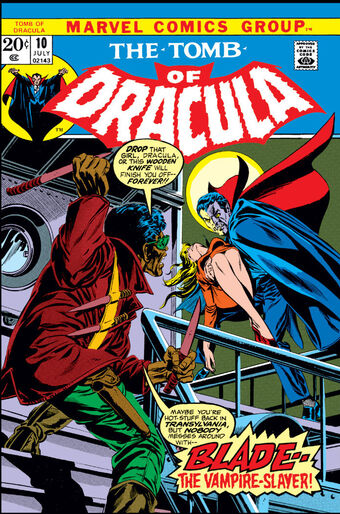
@TheBelser
Delving into the world of the supernatural is not for the faint of heart. Of course there are many superheroes are specialize in this sort of thing. There are number of brothers and sisters who really delve into the darkness for the sake of humanity. They tangle with the things that go bump in the night like vampires, werewolves and zombies. For this article, we will discuss one of my particular favorites: Blade the Vampire Hunter.
Blade was created by writer Marv Wolfman and artist Gene Colan and was first introduced in The Tomb of Dracula #10 (July 1973).
Gene Colan recalled in 2003, “Marv told me Blade was a black man, and we talked about how he should dress, and how he should look – very heroic looking. That was my input. […] The bandolier of blades – that was Marv’s idea. But, I dressed him up. I put the leather jacket on him and so on”.
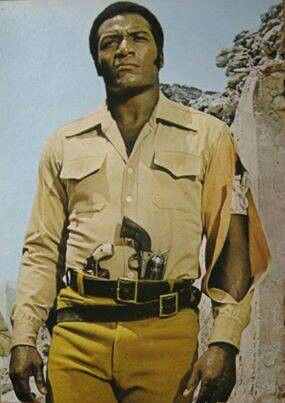
Colan based the character’s features on “a composite of black actors” but most notably, NFL Hall of Famer, actor and activist Jim Brown.
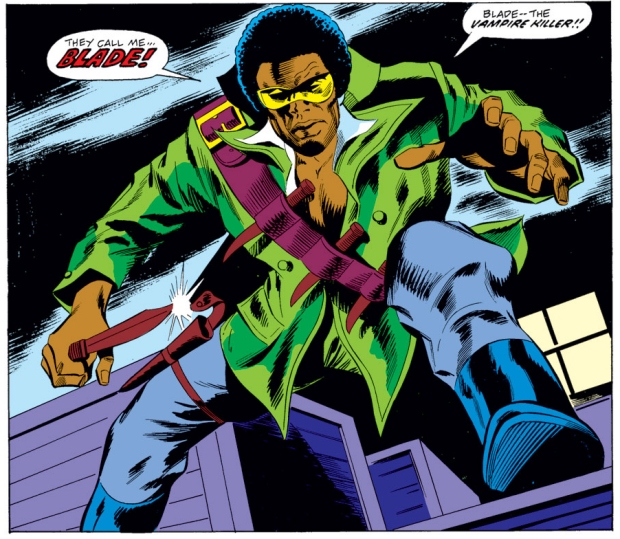
Blade appeared in many issues of Tomb Of Dracula as a freelancer that helped out the book’s main team of vampire hunters on occasion. Like Racer X on Speed Racer, he would do what needs to be done and disappear on his own crusade.
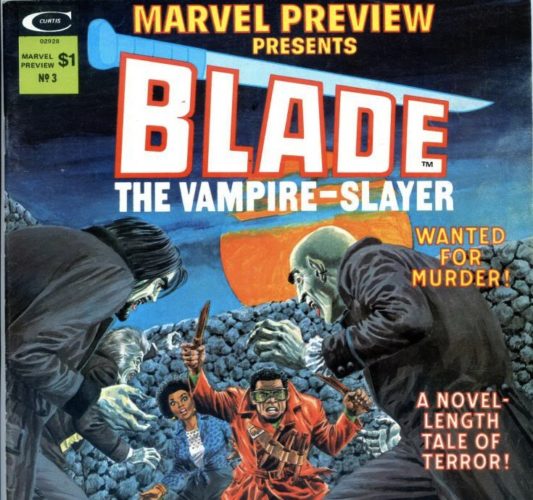
Wolfman himself knew of Blade’s potential from the beginning:
“I knew if I let him, Blade would eclipse the other characters so I pulled him back and let original supporting characters Rachel, Frank and Quincy shine. I also wasn’t happy with my Blade dialogue, so I pulled him out of the book for a while — I think almost a year — and when I brought him back I played him a bit straighter. The early Blade dialogue was cliche ‘Marvel Black’ dialogue. Later on, I tried to make him more real. But it took growing up as a writer.”
After his initial run on Tomb, Blade would get a few solo stories and disappear for over a decade.
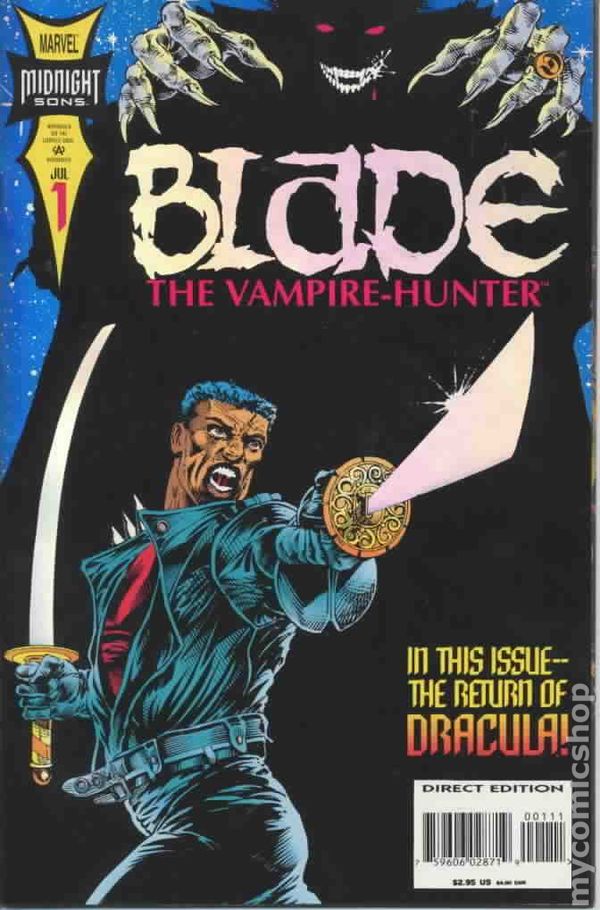
Blade came back into prominence in the 1990s during the age of the violent anti-hero. Titles like The Punisher, Wolverine and X-Force were gaining big sales and major attention. Blade’s return began with Ghost Rider #28 (Aug. 1992), with a new all black leather look and new weaponry like his now trademark sword. He became a member of a number of super groups like The Midnight Sons and The Nightstalkers.
ORIGIN
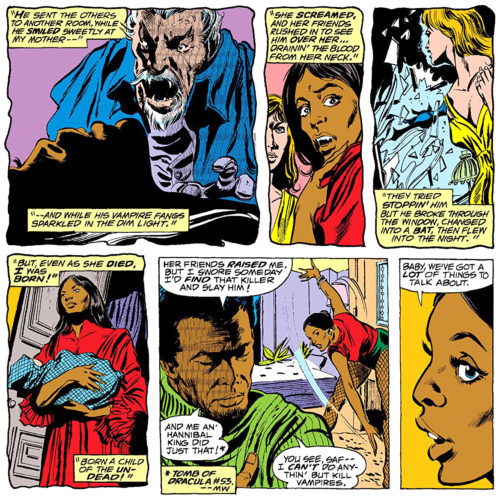
Eric Brooks was born in a whorehouse in the Soho neighborhood of London, England in 1929. His mother Tara Brooks was a prostitute at Madame Vanity’s Brothel. When Tara started going into labor, a doctor was called to help with the delivery. The doctor, however, was actually Deacon Frost, a notorious vampire who feasted on Tara during Eric’s birth, Tara was killed but the bite passed along certain vampiric enzymes to the infant.
Thus, Eric was born a Dhampir (‘one tainted by the vampire’s kiss but not converted’). Eric was not a full-on vampire but he develop vampiric traits like a greatly prolonged lifespan and the ability to sense supernatural creatures. Eric was also immune to a complete vampire conversion.

At age nine, Eric saw an old man being attacked by vampires who then used a silver cane to kill the vampires. This man was Jamal Afari, a jazz trumpeter and vampire hunter. After the encounter, Jamal moved into Madame Vanity’s and trained the young Eric in both music and combat. Eric became a formidable warrior from years of training. His particular expertise with edged weapons like knives and daggers was so good that it earned him a nickname among both vampire hunters and the vampires that opposed him: “Blade”.
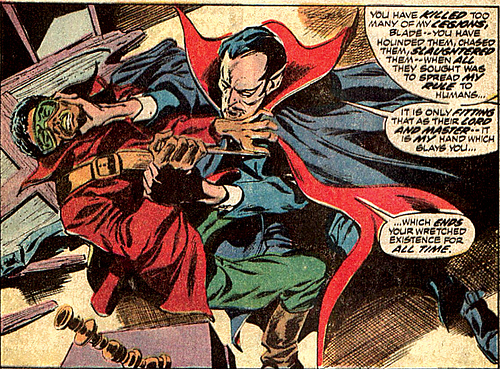
Unfortunately, Afari found himself as prey to the fiendish Count Dracula in the first of many encounters between Dracula and Blade. Blade mercy-killed his mentor after Afari rose as a vampire and began tracking Dracula around the world is a quest to destroy him for good.
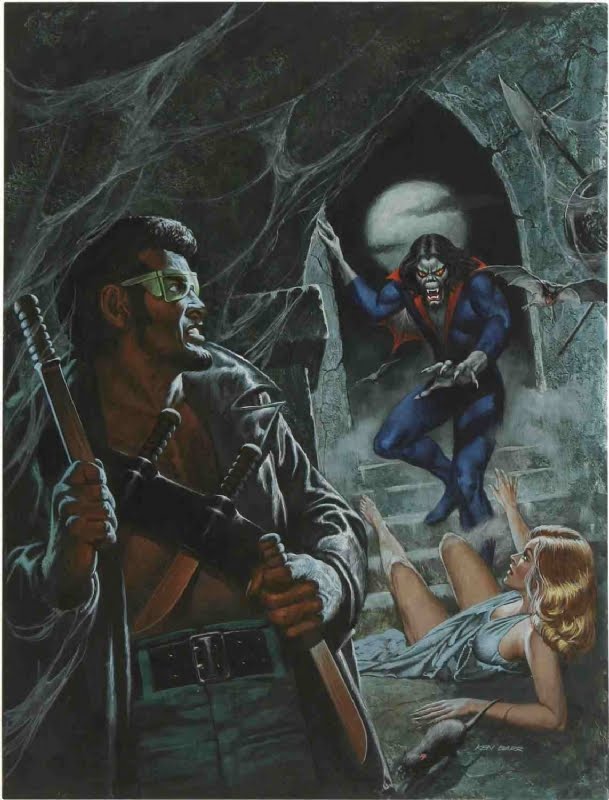
After many years of hunting, Blade followed the vampire Morbius to New York, where Blade wound up bitten. Blade’s blood enzymes reacted unexpectedly with Morbius’s unique form of artificial vampirism. The result would have Blade gaining all of a vampire’s strengths but none of weaknesses inherent to a vampire, like the weakness to silver or sunlight. It was this unexpected change that gave Blade a new unofficial title among his prey: “The Daywalker”.
THE JUMP TO TV
Blade made his first multi-media appearance outside of comics on the episode“Neogenic Nightmare: Chapter 9: Blade the Vampire Hunter“on Spider-Man: The Animated Series (1994) voiced by J. D. Hall. In that episode, Spider-Man and Blade meet each other for the first time as they both hunting the vampire Morbius for their own reasons.
https://www.youtube.com/watch?v=B2383o2YOeI
The episode also has the very first appearance of Abraham Whistler in any version of the Marvel Universe as Whistler had never appeared in a comic book before. In this version of his origin, Blade was the son of a vampire man who had fallen in love with a human woman named Miriam. She left Blade in foster care before she became a vampire herself. Blade was found as a boy by Whistler and trained to become a great vampire hunter.
Blade wore a costume based on his appearance in the 90s’ Nightstalkers comic series and his own solo series. Blade appeared in a number of episodes including “The Immortal Vampire”, “Partners in Danger, Chapter 7: The Vampire Queen”, and “Secret Wars, Chapter 2: Gauntlet of the Red Skull”. It was this cartoon appearance that made Blade a fan favorite among viewers of the show and that interest would carry over to the silver screen.
BLADE: THE MOVIE
Producer Peter Frankfurt had just finished the Tupac Shakur movie Juice when he had a chance conversation with the head of Marvel Films about the absence of black superheroes in the comics.
“A few days later, I got a copy of the Blade comic book in the mail,” Frankfurt said. The producer, who wasn’t much of a comic aficionado at the time, was immediately intrigued by the idea of bringing Blade to the screen. “Blade appealed to me because he’s not your typical hero. He lives to kill vampires and exact vengeance,”
Frankfurt met with the late Stan Lee and fellow Marvel executive Avi Arad, who suggested he contact Michael De Luca, then-president of production at New Line Cinema. De Luca was instantly receptive to Frankfurt’s idea for a feature film based on Blade. “Mike’s reaction was a definitive ‘Go,'” recalls Frankfurt.
The Script:
Frankfurt and producer Bob Engelman hired young writer David S. Goyer, who had the right training and sensibility for the job. Fresh out of USC Film School, Goyer ‘s main credits were writing the Jean Claude Van Damme martial arts flick Death Warrant and The Crow: City of Angels. The writer produced a first draft eight weeks after being hired. Goyer shared the producers’ vision of the material in that Blade had an all new take on the vampire theme and defy all of the ordinary vampire film clichés like crosses and wooden stakes.
Wesley Snipes:

Action star Wesley Snipes had already made a name for himself in blockbusters like Passenger 57, New Jack City, Demolition Man and White Men Can’t Jump. Wesley’s first association with Marvel was an attempt for himself to play The Black Panther in a major motion picture. That ultimately would not come to be as the movie adaptation of Black Panther starring Chadwick Boseman was released 20 years later as part of the Marvel Cinematic Universe.
Snipes was not familiar with the Blade comics but immediately saw a connection to the blaxploitation heroes of the 1970s like Shaft, Trouble Man and Slaughter. “I just approached him as this really cool character where I’d get to do martial arts and wear a leather suit,” he said.
According to producer Frankfurt, the fight sequences reflect the character of the film’s superhero. “Blade is highly disciplined, and that influences the way he wages war. He moves with almost surgical precision.” Snipes, who is a trained martial artist, performed many of his own stunts. Snipes would say that Blade was “the most physically challenging role of his career” but it was also a role Snipes was anxious to undertake. “I’ve been waiting for this for a long time. Blade gave me the opportunity to pay homage to some of the classic Asian films,” explains the actor.”We’re doing things with swords and other weapons, and wires … things that seem to be only done in Hong Kong.”
Movie Facts:
- Blade was produced on a budget of $45 million. Filming began on 5th February 1997 and ended in June of that year in and around Los Angeles with some scenes being shot in Death Valley. All sets were constructed, and all on-set filming occurred, in what was formerly the Redken Shampoo factory in Canoga Park.
- While far from the first movie based on a Marvel Comics property, Blade was only the second Marvel movie to receive a theatrical release in the US. after 1986’s Howard the Duck.
- The famous club scene song is “Confusion” by New Order.
- Stan Lee originally was supposed do the first of his many big screen cameos in this movie but it was ultimately cut from the film. He played one of the cops that come in to the blood club during the aftermath and discover Quinn’s body on fire.
- When Whistler first introduces himself to Karen he says his first name is Abraham. Bram Stoker, who’s first full name is Abraham wrote the original Dracula novel. He even used the name for one of his lead characters, the vampire hunter Abraham Van Helsing.
- Deacon Frost is reimagined as a more Generation X type of character. His comic book counterpart was an older, German accented, white haired gentleman that hailed from 1868.
- Blade’s main weapon is a modified Mac-11. Blade also uses a Benelli M3 shotgun with a pistol grip which can fire silver stakes or normal ammunition.
- Blade’s sword lacks a guard, or tsuba (which makes it impractical for actual swordfighting).
- The Vampire Bible is referred to as “The Book of Erebus”. Erebus is a god of dark night in Greek mythology.
- Released on August 21, 1998, Blade became a commercial success by grossing $70 million at the U.S. box office, and $131.2 million worldwide. The film received a positive reception from audiences and has since garnered a cult following.
OTHER MEDIA
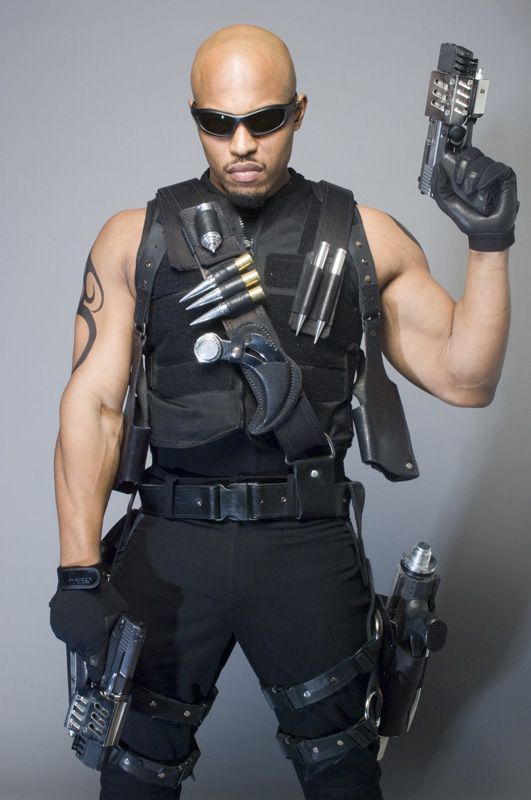
Blade was portrayed by rapper Sticky Fingaz in Blade: The Series on Spike TV. The series dealt with Blade fighting an evil vampire named Marcus Van Sciver in Detroit, which is also Blade’s birthplace in this series. As in the movies, Blade’s birth name is Eric Brooks and his mother was named Vanessa. In this version, Blade’s father is named Robert Brooks, who raised him until he was 12 and elements of his vampiric nature became more apparent. Despite a strong debut, the series did not connect with fans and was cancelled after one season.

- Blade appears in Marvel Anime: Blade, voiced by Harold Perrineau in the English dub. Blade spends the majority of the anime pursuing Deacon Frost and his secret organization called “The Existence“. In the past, Eric had to kill his vampire-converted mother in self-defense and was trained in vampire-hunting by Noah van Helsing and Tanba Yagyo. Blade also encounters many of the different vampire myths around the world like the Manananggal (from The Phillipines) and the Sundel Bolongs ( from Indonesia).
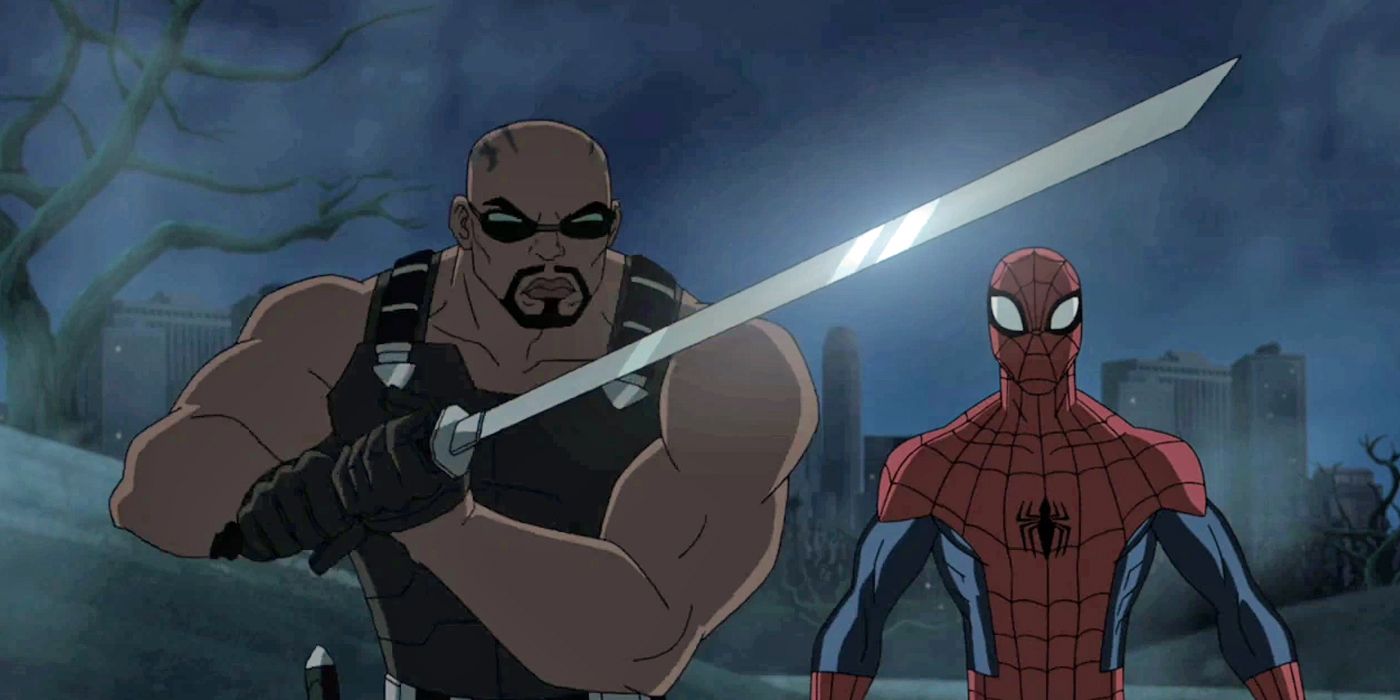
- Blade appears in Ultimate Spider-Man, on Disney XD voiced by Terry Crews. He is a muscular African-American man with tattoos of ancient runes on his scalp. In the two-part Halloween special episode “Blade and the Howling Commandos”, Blade, along with Spider-Man’s team, battles an army of shadow vampires working for Dracula himself. It is later revealed that he was once a member of the Howling Commandos but left the group. This version of Blade also appears in Hulk and the Agents of S.M.A.S.H., with Crews reprising the role. In the episode “Hulking Commandos”, Blade is with the Howling Commandos on Halloween tasked by Nick Fury to apprehend the Agents of S.M.A.S.H. until a threat by Dormammu comes into a view.
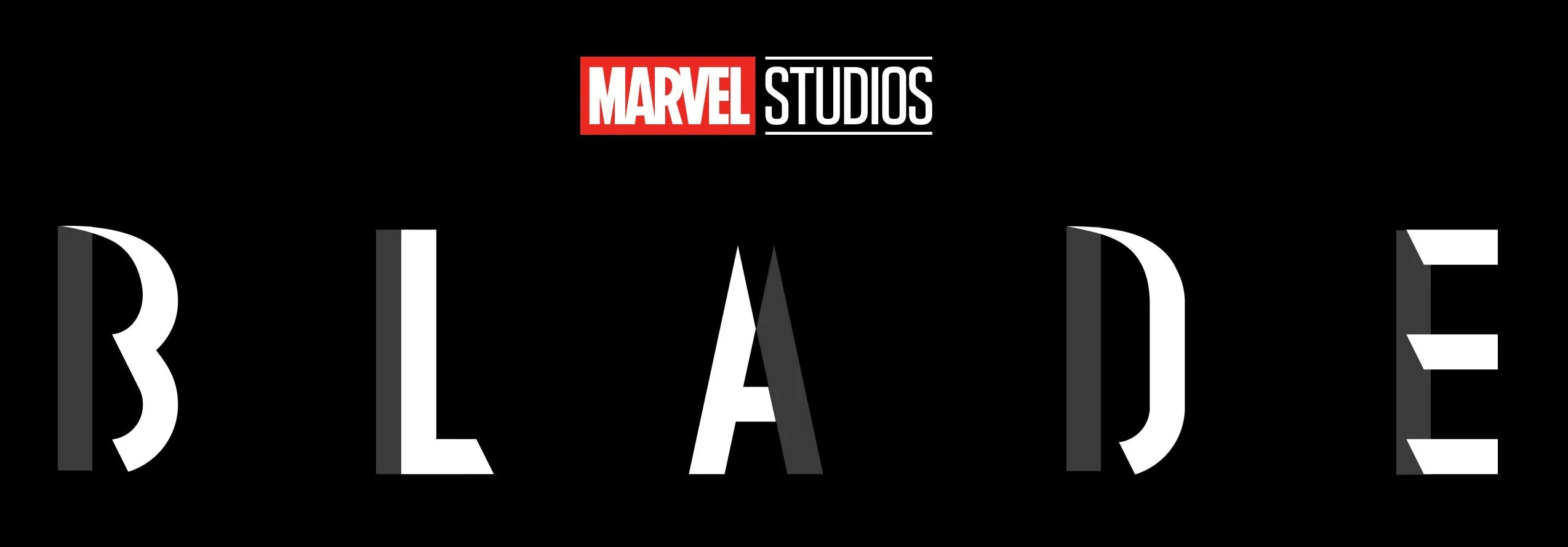
In a surprise announcement at the 2019 San Diego Comic Con, Marvel Studios confirmed that a new film based on the superhero is in the works. No release date, director, or other stars have been revealed for Blade at this time.
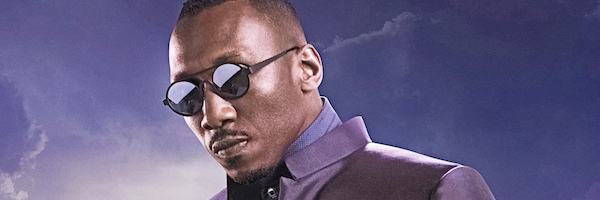
The only major casting announcement is that of two time Oscar winner Mahershala Ali in the title role. Ali previously played the villain Cornell Stokes a.k.a. Cottonmouth in Netflix’s Luke Cage.
LEGACY
IGN ranked Blade as the 63rd greatest comic character stating where Blade is recognized as the most iconic hero to spring from the period of Marvel’s 1970s monster-themed stories. UGO Networks placed Blade as one of the top heroes of entertainment quoting that “Blade has to get props for being the most obscure Marvel character to ever get a film deal… and television deal, too!”
Though later overshadowed by the more successful X-Men (2000) and Spider-Man (2002), Blade was the first Marvel movie to be a bona fide financial and critical success. The movie’s success proved that Marvel characters could headline their own movies and is directly responsible for the Marvel cinematic boom we are experiencing today.
So, all you undead denizens of the underworld, Beware! BLADE is coming back!!
UNTIL NEXT TIME!!
-JaDarrel Belser


